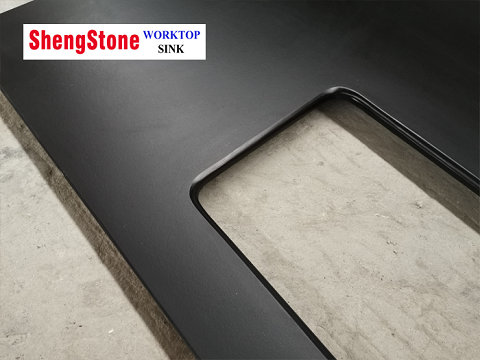Epoxy countertop cons
- Epoxy countertop cons come from mismatched performance and lab needs. The poor scratch resistance is a major issue.They work for basic use but fail in high heat, strong chemicals, heavy work, and daily operations with sharp objects. Labs should pick based on their tasks. They can use stainless steel or ceramics too.

- Epoxy countertop cons are clear in labs. They are used often for corrosion resistance and easy cleaning, but problems exist. These problems link to busy lab work. Here are the details:
Limited chemical resistance
- Epoxy countertop cons start with limited chemical resistance.
- They handle weak acids and bases well. But strong oxidants, like concentrated nitric acid, harm them. The surface turns yellow or black. It may get spots or cracks.
- Polar solvents, such as acetone, also damage them. The surface gets sticky or peels. Fluorine-containing chemicals can seep in and weaken the structure.
Weak scratch resistance
- Epoxy countertop cons involve weak scratch resistance, which is particularly noticeable.
- Even light contact with sharp objects can leave marks.
- Using metal scrapers to clean stubborn stains will definitely create obvious scratches.
- Glass stirring rods, when moved with force, also leave clear lines on the surface.
- Placing equipment with sharp edges, such as iron stand bases, for a short time will leave indentations that are hard to remove. These scratches are not just unsightly; they are like small channels that let stains and reagents seep into the deeper layers of the countertop.
- Over time, the damage gets worse, making the countertop look worn and reducing its service life.
Poor high-temperature tolerance
- Epoxy countertop cons include poor high-temperature tolerance.
- They resist up to 80-120°C. Hot items, like heated beakers, can soften or bend the surface.
- Long contact with heat over 80°C may make them brittle, with edges splitting sometimes.
Easy staining and hard cleaning
- Epoxy countertop cons also mean easy staining and hard cleaning.
- The surface looks smooth but has tiny holes.
- Colored reagents, like iodine, stain them if not wiped. Dried crystals, such as sodium sulfate, leave hard-to-remove marks. Seams trap dirt and bacteria, risking contamination.
High costs: a significant
- Epoxy countertop cons include high costs.
- They are expensive to buy. Making them on-site adds to the price.
- Small labs with little money struggle. Fixing damage is hard, especially scratch-related damage which is hard to repair. Cracks or deep scratches need replacement. Regular care needs special products, costing more.
Poor adaptability to special scenarios
- Epoxy countertop cons show in special scenarios.
- UV light, like from disinfection lamps, fades them. The surface becomes powdery. They don’t stop static.
- Electronic labs need extra coatings, which wear and cost more.
- Heavy equipment, like large incubators, makes them sink or bend.